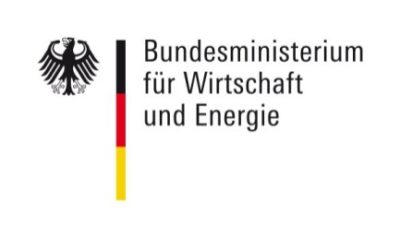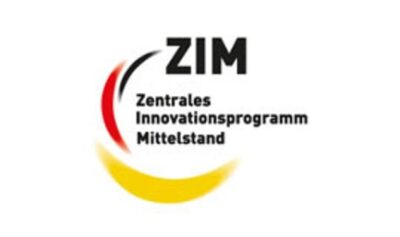Competencies Research & Development
Horizon 2020
Compact X-Ray Fluorescence probe for uniquely flexible, efficient and accurate underground material analysis
Rapid and accurate sample analysis improves the efficiency and cost-effectiveness of mineral exploration and mining. The EU-funded IBERIA XRF project is developing a tiny probe that uses X-ray fluorescence, a non-destructive analytical technique used to determine the elemental composition of materials with outstanding accuracy.
The analytical technique determines the chemistry of a sample by measuring the fluorescent X-ray emitted by it when excited by a primary X-ray source. Unlike traditional methods, such as neutron activation, which are very expensive and time-consuming, X-ray fluorescence will decrease exploration costs and duration by over 80%.
Funding agency:
European Innovation Council (EIC) funding
Funding Programme:
Horizon 2020 SME instrument
URL at funding agency:
https://cordis.europa.eu/
Duration:
01.03.2020 – 28.02.2022
Consortium partners:
none

Extense
Development of a measuring system (multisensor platform) for detection and localisation of objects (cables, ammunition and deep-sea mining) in sediments.
In the joint project EXTENSE, we will develop a measuring system (multi-sensor platform) for the detection and location of objects (cables, ammunition and deep-sea mining) in sediments in collaboration with the Technical University of Lübeck and the associated partner Fugro OSAE GmbH under the leadership of the Sea & Sun Technology GmbH. Compared to the state of the art, the aim is not only to locate objects and materials in the seabed more precisely, but also to identify them better.
This is achieved by sensor fusion in combination with sonar technology and position determination in order to locate artificial infrastructures such as underwater cables and pipelines reliably and accurately. The measuring system is user-friendly in its application and handling. The system supports the operator with implemented expert knowledge through a new user-friendly user interface, which essentially includes imaging and mechanical integration.
Funding agency:
German Federal Ministry for Economic Affairs and Energy (BMWi)
Funding programme:
Maritimes Forschungsprogramm
Duration:
01.10.2018 – 30.09.2022
Consortium partners:
Sea & Sun Technology GmbH (project lead), Technical University of Lübeck, Fugro OSAE GmbH
SecMinTec
Sustainable Technical Solutions for the Recovery of Economically Strategic Elements and Precious Metals at Chilean Locations
Chile’s extensive copper mining has left large areas of old bodies from ore processing residues. SecMinTec wants to show how valuable metals and economically strategic elements from old bodies and mining waters can be efficiently recovered. At the same time, pollutant emissions from mining waters are to be reduced. The retention of metals is linked to their recovery via ion exchangers in this case. The project is first developing a structural understanding of tailing bodies, which will serve as the basis for the localisation of enrichment zones of precious elements contained therein.
This will then be followed by a plan for the selective recovery of these enrichment zones. During belt transport, different material classes are separated by element measurements. The project is also investigating the retention and recovery of precious elements from mining waters. SecMinTec is also aiming for a holistic approach to the recovery of precious elements from slags, because this is linked to the production of water treatment materials.
Funding agency:
Federal Ministry of Education and Research (BMBF) funding
Funding Programme:
CLIENT II – Internationale Partnerschaften für nachhaltige Innovationen
URL at funding agency:
https://www.bmbf-client.de/
Duration:
01.01.2018 – 30.09.2021
Consortium partners:
Technische Universität Bergakademie Freiberg (project lead), Bundesanstalt für Geowissenschaften und Rohstoffe (BGR), Fugro Germany Land GmbH, TAKRAF GmbH, G.E.O.S. Ingenieurgesellschaft mbH

Marine Plast Ident
Real-time detection of macro plastics from image recordings of the surface of rivers, lakes and the sea (Marine Plast Ident)
The goal of the project is to develop an integrated camera system that allows an automated identification and quantification of macroplastic floating at the surface of water bodies.
The weather-resistant device shall be mountable all types of vessels to achieve a broad-scaled litter monitoring.
Funding agency:
German Federal Ministry for Economic Affairs and Energy (BMWi)
Funding programme:
Zentrales Innovationsprogramm Mittelstand (ZIM)
Duration:
01.07.2019 – 31.12.2022
Consortium partners:
none

ANCORELOG
Analytical core logging system (ANCORELOG)
ANCORELOG aims to deliver precise real-time and online information deducted from chemical, physical and textural sample properties through a combination of innovative technologies.
Precise measurements of chemical element concentrations on the sample surface will be weighted and interpolated to the full sample volume. Additionally physical and textural sample parameters will be considered for a classification of rock samples into geological, geotechnical and geometallurgical domains using algorithms designed to fulfill end user needs
Funding agency:
EIT Raw Materials
Funding programme:
KIC Value Added Activity (KAVA)
URL at funding agency:
https://eitrawmaterials.eu/
Duration:
01.04.2018 – 31.03.2021
Consortium partners:
DMT GmbH & Co. KG (project lead), Bundesanstalt für Geowissenschaften und Rohstoffe (BGR), Catura Geoprojects (Geosciences Conseil), ERAMET IDeas, Fraunhofer-Gesellschaft zur Förderung der angewandten Forschung e.V. (Fraunhofer), Geologian tutkimuskeskus (Geological Survey of Finland GTK), LTB Lasertechnik Berlin GmbH, LTU Business AB, Minas de Aguas Teñidas SAU (MATSA), Teknologian tutkimuskeskus VTT (Technical Research Centre of Finland Ltd. VTT), Université de Liège, Université Paris Sud-Paris Saclay

MOLECULE XRF
Monitoring Of Low Elemental Contributions in Unclarified Liquids Employing XRF
The goal of this project is to integrate J&C Bachmann’s X-ray fluorescence (XRF) based system for the analysis of slurries with a state-of-the-art hydraulic pipe multiplexer and extend the analyzer software with powerful Artificial Intelligence Algorithms enabling preventive maintenance of the coupled device.
Each application produces characteristical XRF spectra; the realized geometry in combination with the X-ray energy determines the shape of the spectra besides of the material to be measured. Machine Learning models will be applied to each single spectrum in order to trace slowly occurring changes which are not related to variations in the slurry. That way slow settlement of particles on the window can be recognized. This settlement will also influence the statistical variations which can be seen from spectrum to spectrum. If this change in statistical behaviour is recognized, then the settlement on the window can be detected early and appropriate action can be taken.
The XRF analyzer will be configured as a bypass system with the multiplexer. Two paths of the multiplexer will be reserved for preventive maintenance: one to clear the analyzer’s measurement window and a second one to circulate a solution with known composition which will serve as a reference for the AI system and, if the AI deems it necessary, for the re-calibration of the analyzer.
Funding agency:
European Innovation Council (EIC) funding
Funding programme:
Horizon 2020 INNOSUP – Mine.The.Gap
URL af funding agency:
https://h2020-minethegap.eu/
Duration:
01.09.2021 – 31.08.2022
Consortium partners:
Euratrade Solutions SAS, Umwelt- und Ingenieurtechnik GmbH (UIT)




